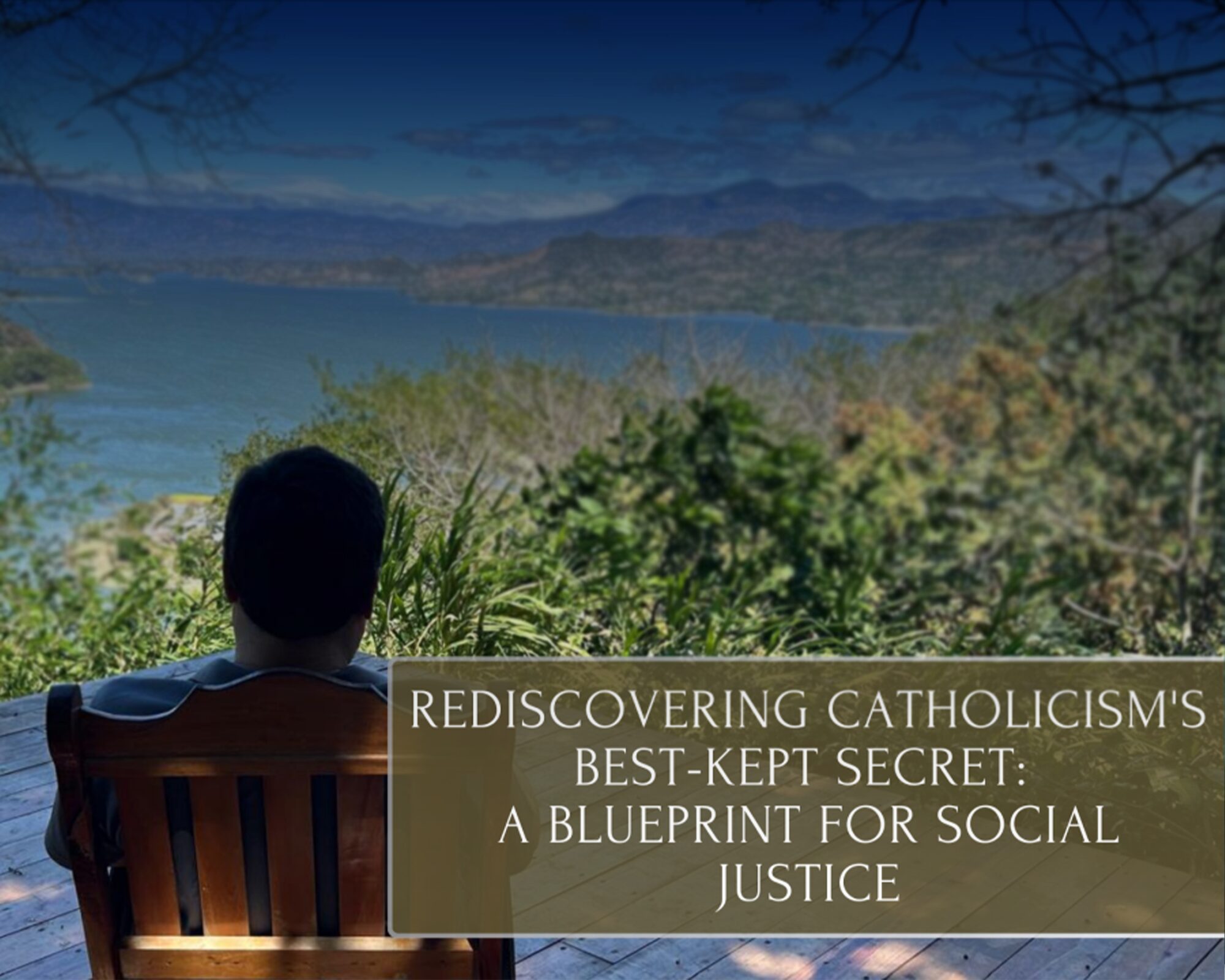When you think of Catholicism, your mind might immediately go to the sacraments, Sunday Mass, or maybe the community feel of a parish potluck. But there’s another aspect of our faith that often goes unnoticed—a hidden gem, if you will: Catholic Social Teaching (CST). Often referred to as the Church’s best-kept secret, CST offers a rich tradition that goes beyond doctrine and delves into the heart of our daily lives. Instead of viewing its “hidden” nature as a flaw, perhaps it’s time we see it as an invitation—a call to engage more deeply, authentically, and creatively with the world around us.
More Than a Doctrine: CST as a Living Tradition
For many, Catholic Social Teaching feels distant—an abstract set of rules, a list of “shoulds” and “should-nots.” But that perception misses something profound. CST is not just a theory; it’s a dynamic tradition, born from centuries of lived faith, struggles, and the ongoing witness of everyday Catholics trying to follow Christ in a complex world. It’s the Church’s way of interpreting the “signs of the times” through the lens of the Gospel, urging us not to merely quote encyclicals but to take action.
CST isn’t confined to encyclicals or theology textbooks. It comes alive in the single mom advocating for fair wages, the parish organizing to welcome refugees, participating in the March for Life, or the young people marching for climate justice. It’s messy, unfinished, and constantly evolving—much like our lives. And that’s why its “hidden” nature is actually an advantage. CST isn’t a prescriptive list handed down from above; it’s a living dialogue that challenges us to discern, question, inform our conscience, and most importantly, act.
CST isn’t a prescriptive list handed down from above; it’s a living dialogue that challenges us to discern, question, inform our conscience, and most importantly, act.
Rethinking CST: A Practical Blueprint, Not a Script
CST offers principles such as the dignity of the human person, the common good, solidarity, and subsidiarity. These aren’t rigid rules; they are more like architectural blueprints—a flexible framework designed to guide us through the complexities of our social, economic, and political lives. Imagine CST as a compass rather than a detailed map. While a map shows a single route, a compass points us in the right direction, encouraging us to navigate our path with wisdom and care.CST’s open-ended nature is intentional because it is meant to be lived, interpreted, and reimagined within each unique context. This flexibility fosters creativity and personal engagement, propelling us towards concrete actions that embody love, justice, and mercy. It is not about following a script, but about constructing something resilient, authentic, and rooted in Gospel values.
Why CST Doesn’t Fit Neatly into Political Boxes—and Why That’s Good
One of the most compelling aspects of CST is its resistance to easy political categorization. It does not neatly fit into conservative, liberal, or moderate labels because it is not designed to. Rooted in a consistent ethic of life, CST challenges us to uphold human dignity and love our neighbor, transcending political ideologies and asking us to think beyond binary choices.
For example, CST’s emphasis on protecting life “from womb to tomb” encompasses a wide range of issues—from opposing abortion to advocating for the poor, immigrants, and the environment. This complexity is not a weakness; it is a profound strength. In a world that often reduces issues to simplistic debates, CST calls us to engage with life’s messy realities and prioritize people over ideologies. By remaining “hidden” from the usual political divides, CST invites us to question assumptions, think critically, and act in ways that genuinely seek the common good.
CST as a Movement: Not Just Principles, But People in Action
Perhaps the most beautiful aspect of CST is that it is not just a set of guiding principles—it is a living movement carried out by ordinary people committed to transforming their communities. Pope Francis often speaks of a Church that is “bruised, hurting, and dirty because it has been out on the streets.” This imagery captures CST in action: imperfect, bold, and deeply grounded in the realities of life.
This movement is embodied by the laity, religious sisters, the clergy, and countless others who, oftentimes quietly, bring CST to life in the world. Examples abound:
– Sarah, a retired nurse, runs a weekly support group for expectant and new mothers, offering practical advice and emotional support.
– Alex, a high school student, organizes climate strikes and educates peers on environmental stewardship as part of their faith.
– Mr. Johnson, a teacher, creates a mentorship program pairing at-risk students with local professionals, breaking cycles of poverty.
– The Patels open their home to foster children, providing love and stability to those in the system.
– Father Miguel transforms an unused church lot into a community garden, addressing food insecurity and building neighborhood bonds.
– Lawyer Lisa offers pro bono services to immigrants, helping them navigate complex legal systems with compassion.
– University students partner with local seniors for a tech literacy program, bridging generational gaps and combating isolation.
Uncovering the Treasure: Living CST in Our Everyday LivesSo how can we uncover this hidden treasure? It begins by viewing CST not as a distant concept, but as a practical guide for our day-to-day choices. It’s in the small, intentional decisions we make: how we spend our money, how we treat our colleagues, how we engage in our communities. This extends beyond voting but also involves interacting with our representatives in Congress to enact laws that align with the values of the Gospel. CST prompts us to examine our own lives and ask ourselves, “How am I contributing to the common good? Where do I stand in solidarity? Am I consistently and ethically living in a way that respects the dignity of every person?”
The supposed secrecy of CST may actually be its strength. Not because it should be kept hidden, but because it challenges us to continually rediscover its significance in each new generation. By remaining somewhat unknown, it avoids being simplified and invites us to live with greater depth, love more radically, and engage with our world through a Gospel-driven vision of justice.
I encourage you not to view CST as a secret to be kept, but as an invitation to delve deeper into the social, political, and economic aspects of our faith. Let it inspire you to take action, to build, and to live in ways that bring about transformation in both your own life and the world around you. CST is not just about knowing what is right; it’s about actively doing what is right—every single day, in every circumstance, with the hope of creating a world that reflects the love of God.





